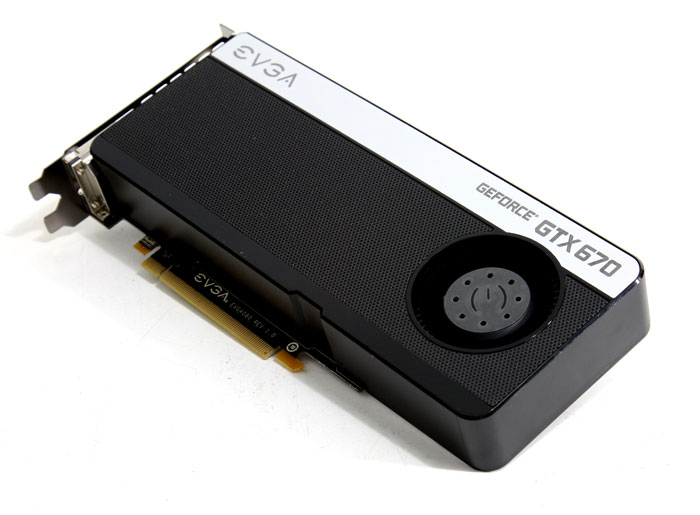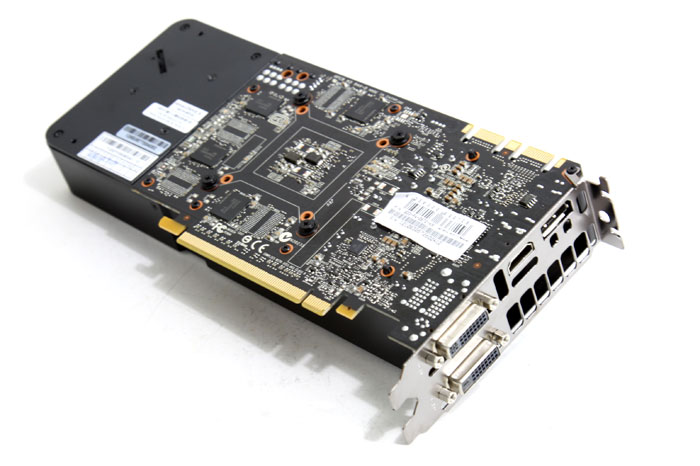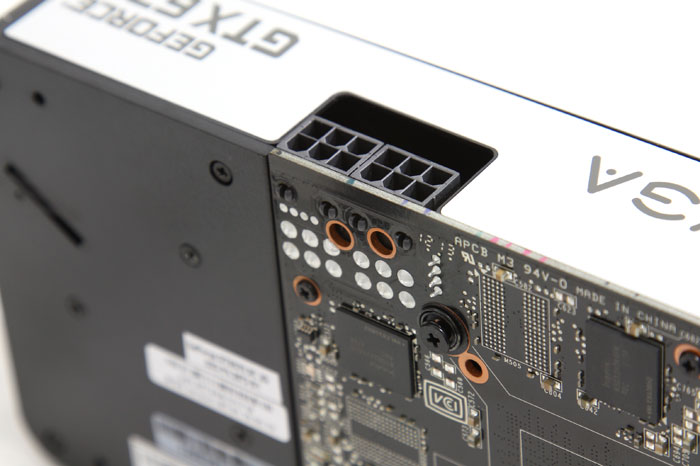Product Showcase
Product Showcase

Alright, here we have the EVGA GeForce GTX 670 SC, the 2GB SKU (stock keeping unit). Overall a nice dark looking card some white tones. Let's look at the card from several different viewpoints. The GTX 670 card is quite good looking with the black colored monitor connectors and a slightly different looking cooler.
The card is equipped with the GK104 GPU that harbors the Kepler GPU architecture. You get the basics like the graphics card, PEG converter cables, manual and a demo and driver CD, though bundles will vary with AIB/AIC partners.
EVGA clocks the card at a 967 MHz baseclock, a 1046 MHz Boost/Turbo clock and the memory is running slightly faster as well at 6210 MHz. This factory tweak positions the card smack down in the middle of a reference GTX 670 and GTX 680 performance wise.

The standard EVGA GeForce GTX 670 SC will come with two GB of graphics memory, that's definitely enough if you are a hardcore gamer with a monitor resolution of 1920x1200. Should you opt multiple monitors and SLI, a 4GB version might be a slightly better alternative.

As stated the typical Boost Clock speed is 1046 MHz. The Boost Clock speed is based on the average GeForce GTX 670 card running a wide variety of games and applications. That Boost clock will vary from game-to-game depending on certain power conditions/envelope, we've seen it clock to roughly 1050~1100 MHz most of the time. The card is PCIe gen 3.0 compatible. Going from PCIe Gen 2 to Gen 3 doubles the bandwidth available to the add-on cards installed, from 500 MB/s per lane to 1 GB/s per lane. EVGA uses a reference based PCB by the way.

The GeForce GTX 670 has a maximum power consumption of roughly 170 Watts, the typical power raw will actually be a hint lower. You'll need to power the card with two 6-pin PCIe PEG lead from your power supply. Due to the small PCB the connectors look a little oddly placed, but that is because the cooler is longer than the actual PCB. EVGA is making use of the reference PCB by the way. Power supply wise we recommend a 550 power supply to start with, with one card that is. BTW - you can actually see the extra GDDR5 SMT solder mounts next to each RAM IC, that's used for the 4GB models.

